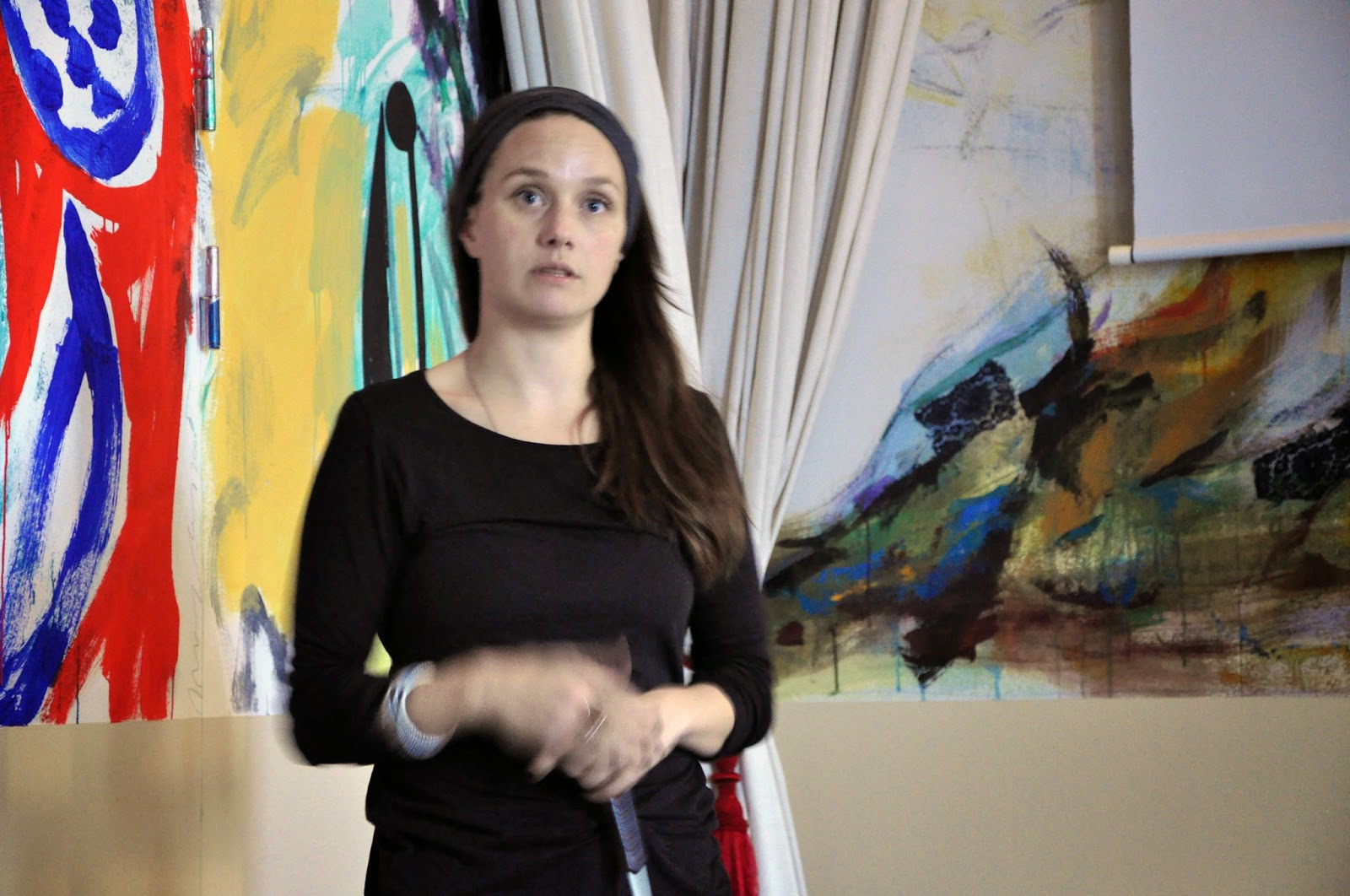It was a misty morning when we met at Häckeberga slott –
some 40 CAnMovians gathered to discuss movement research for 1, 5 intense days!
 |
| Jannie, Sylvie and Emily |
Among
the participants were also four of CAnMove’s
five scientific advisary board (SAB) members, and it was our newest SAB, professor Holk Cruse from Bielefeld
University, who started off the conference. Touching upon a Nobel prize topic, he gave a presentation on whether insects use cognitive maps for navigation or not.
 |
| Marilyn Ramenofsky |
Marilyn
Ramenofsky followed with a talk comparing migrant and resident white-crowned
sparrows in terms of behavioural and physiological traits, Kerstin Johannesson
talked about the reproduction of Baltic sea wrack and Steve Reppert ended the first session with an overview of the evolutionary history of genetics of Monarch butterfly migration.
 |
| Steven Reppert |
The conference as a whole, followed the morning trend with
presentations covering a broad range of organisms, methods and approaches. Christoffer Johansson introduced
us to some of the novel approaches in the flight lab, such as modelling a 3D
wing or creating an optimal feather. Sissel Sjöberg gave us an overview of
the Falsterbo Radio Telemetry project with
- at the moment - 1 409 893 5 gathered
data points to analyze.
 |
| Sissel Sjöberg |
 |
| Two good friends (photo from Anders Hedenström's presentation) |
Anders Hedenström shared some of the fresh results of
the non-breeding flight behaviour of the the common swift, using the latest technology from CAnMove's own lab.
Mikael Ekvall updated us on the latest research from the nano biology group. Expanding from 1 litre to 30 litre aquariums enables new approaches, such as introducing other species and also predators. Sylvie Tesson continued on the aqatic path with her talk on how environmental factors help shape
community diversity in protists.
 |
| Sylvie Tesson |
Due to relatively short slots we got the opportunity to listen to no less 16 interesting talks the first day (which makes it impossible to cover all here!), and the experienced presenters did well in keeping their time slots. Although some of the more enthusiastic presenters, like Jan-Åke Nilsson, literally had to be chased off the scene by the chair.
 |
| Jan-Åke Nilsson taking about limitations to feeding rate in bird parents. |
Right from the programme start, outreach and communication has been on the agenda, and during the conference there were no less than two presentations on outreach projects targeting young people.
When Jan Heuschele realized how much non-scientific material about evolution/intelligent design there was for children, he decided to take matters into his own hands. And so he created "the world of Hopfs" - an e-book for chidren on how evolution works. Inspiring!
 |
| Jan Heuschele |
Some hours later, Caroline Bolmeson and photographer Aron Hejdström presented CAnMove's own scientific outreach project - an e-book on animal movement research for high school students - engaging most of the CAnMove associated PhDs and postdocs. For the first time we got to see some of Aron's breathtaking photos, which just made you long for more!
 |
| Arne |
However, a
conference is not only about presenting research - meeting,
talking and having a nice time is equally important - and the nice
surroundings, good food and inspiring environment helped.
 |
| Susanne & Mikkel |
 |
| Caroline, Christina & Sylvie |
To sum up the conference from the advisory board's point of view, they concluded that the programme development since the conference in 2011 has been remarkable. Especially the technological development – which also has been CAnMove's first
and primary goal. Moreover, they were impressed by the development in the genetic field as well as the successful integration between genetics and
ecology.
Thanks to everyone who contributed to this inspiring meeting and also to Christina and Susanne for the great organization!
//Text and photo:
Helena Osvath












